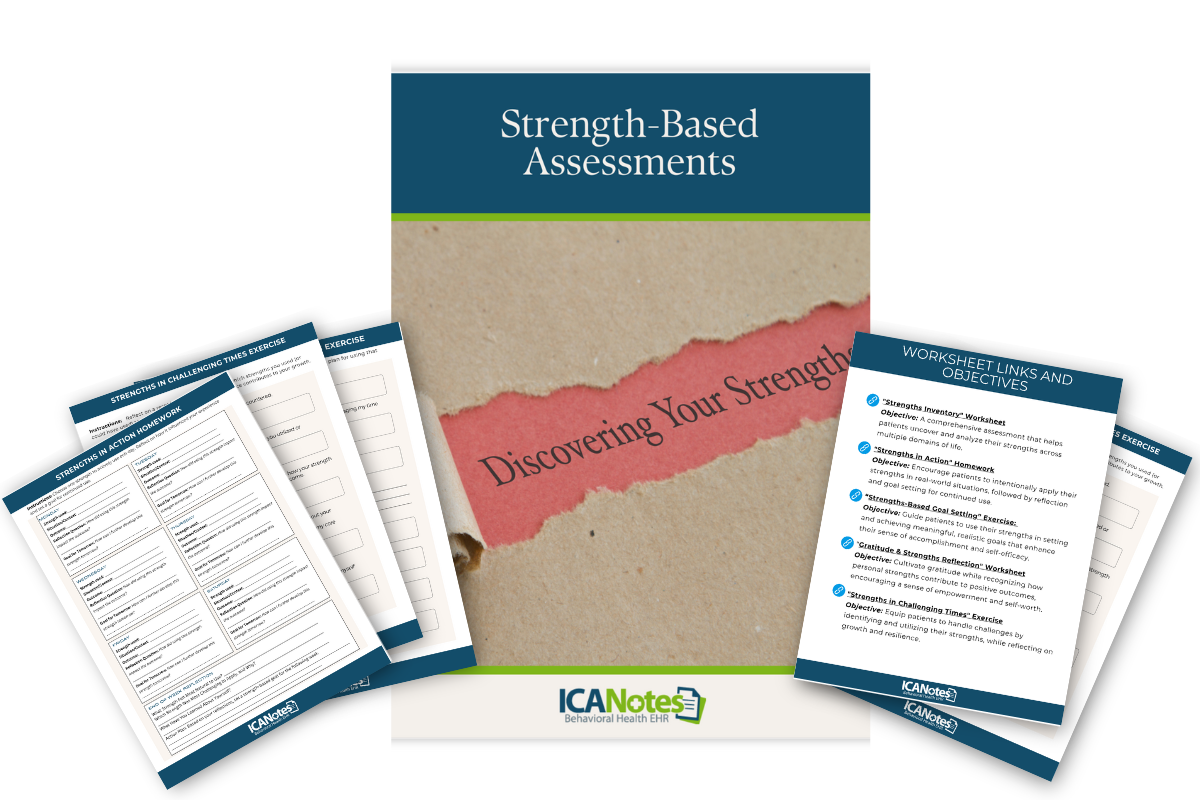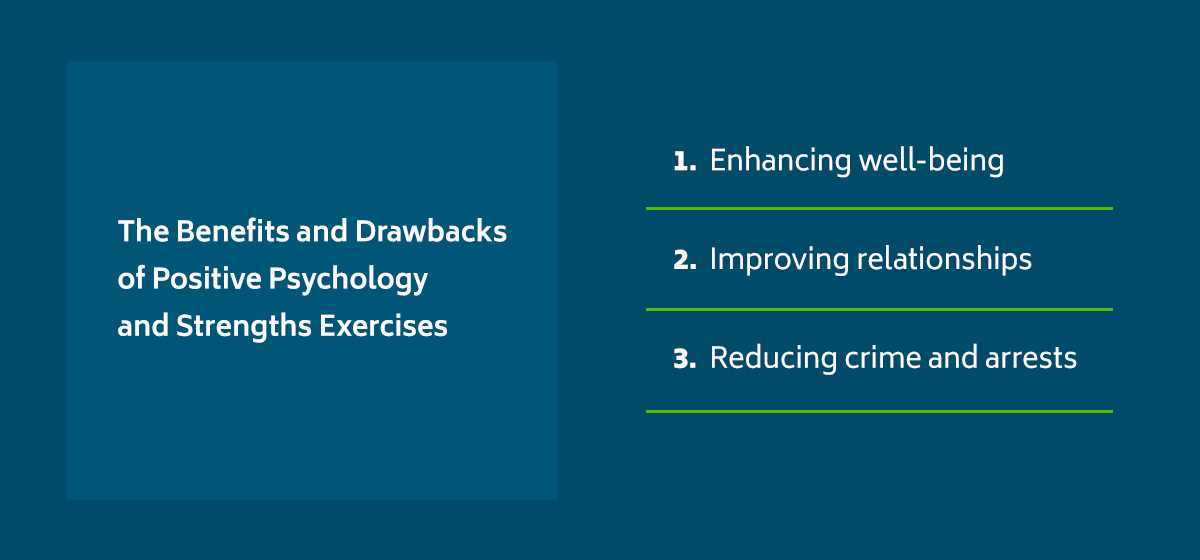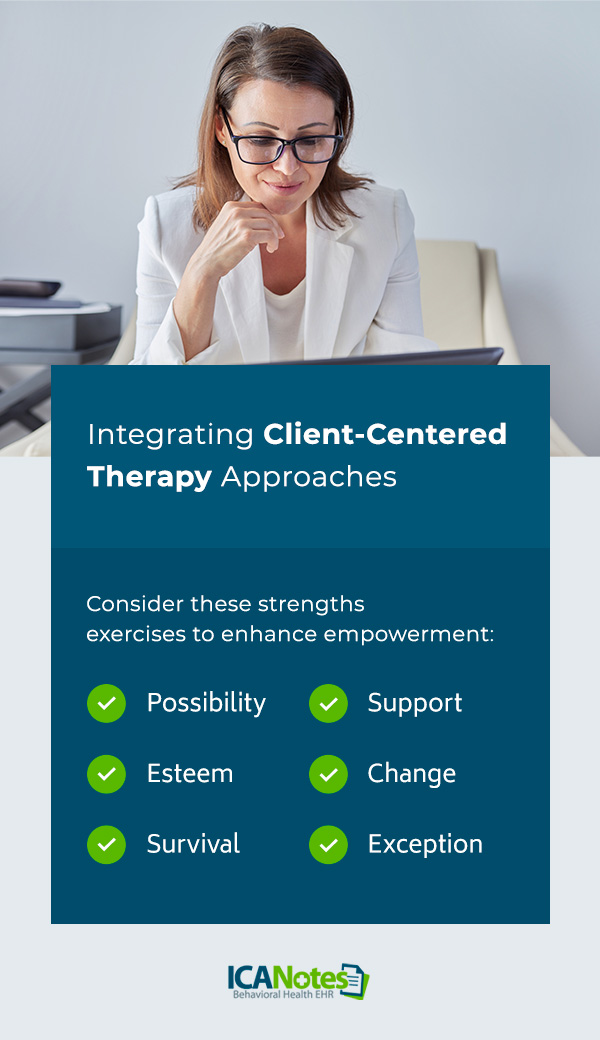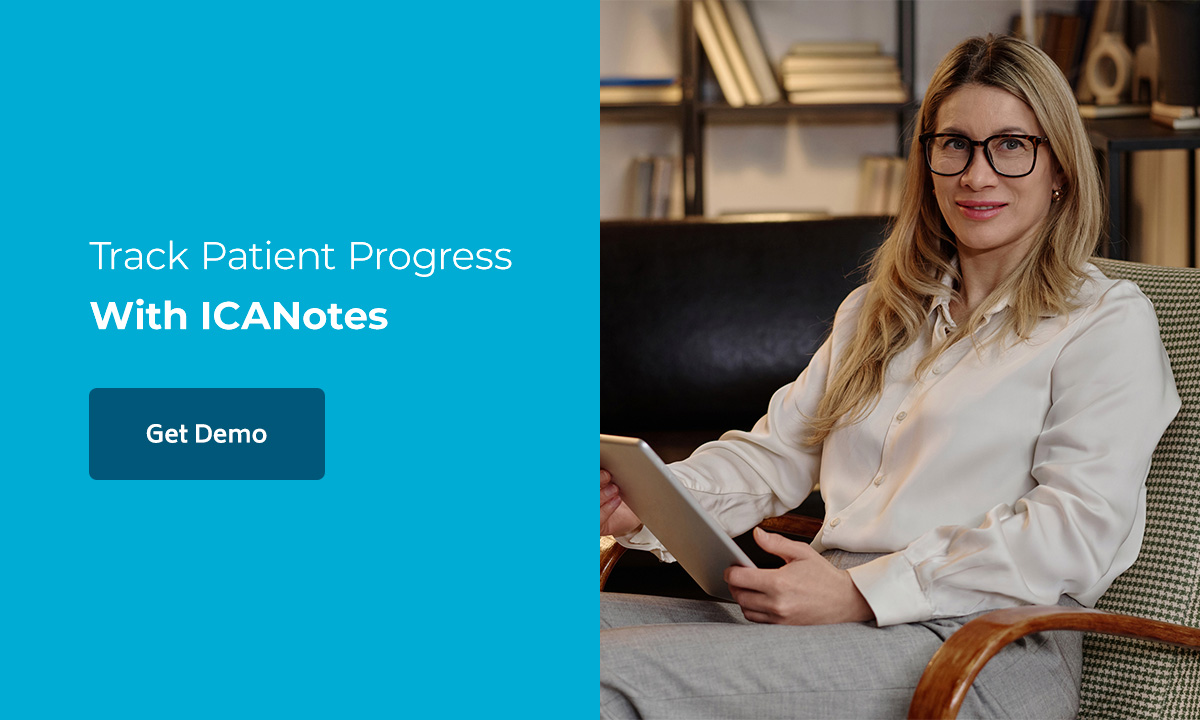
Tips for Conducting a Strength-Based Assessment in Mental Health Treatment
FREE DOWNLOAD:
Help your clients tap into their strengths with these simple, effective worksheets that encourage personal growth and resilience, empowering your clients to see their own strengths and build a brighter future.

Understanding the Strength-Based Therapy Approach
Strength-based therapy focuses on each person's strength and determination. This approach aims to build client resilience and help clients see how they can use their skills resourcefully in adverse situations. This type of therapy is client-centered, empowering people to spark the changes they experience in their lives. Strengths-based practices and approaches consider a person's quirks, rights, attitudes and capacities to craft unique solutions.
There are six core principles of the stregnth-based approach:
- Goal-setting: This approach is goal-oriented, meaning clients must set meaningful and reasonable goals for themselves.
- Strengths assessment: Rather than focusing on a person's deficits, strengths-based therapy empowers clients to recognize the inherent resources they can utilize to counteract difficulties.
- Environmental resources: Every environment has something that people can find useful, and sometimes practitioners need to guide clients to these associations, people, institutions, groups or other resources.
- Alternative methods: Varying approaches will rely on different methods for attaining goals, but the overall aim is to help clients identify how they can reach their goals by using their strengths.
- Hope-inducing relationships: Strength-based therapy aims to boost feelings of hopefulness by strengthening relationships with cultures, communities and people.
- Choice autonomy: Clients must recognize that they control their lives and can make informed choices to drive change and improve their situations.
The Benefits and Drawbacks of Positive Psychology and Strengths Exercises

There are several approaches to strength-based therapy. Although each patient requires unique solutions and can experience different results, people often see many improvements when using this method. Utilizing a strength-based assessment and approach can bring many benefits, including:
- Enhancing well-being: Studies have shown that strength-based therapy can boost a sense of hope and improve self-efficacy. This approach helps patients build confidence, reach their goals, increase resilience and find effective coping strategies. Capitalizing on these positive elements can boost quality of life and enhance well-being.
- Improving relationships: Along with empowering patients to view their skills and attributes in a positive light, strength-based therapy also encourages people to strengthen new and existing relationships. Local support groups, organizations and groups can help clients refine their skills or boost their confidence while making lasting connections with others. Additionally, by recognizing and leveraging their strengths, people can learn how to communicate better or more effectively with loved ones and friends, aiding in creating stronger and longer-lasting relationships.
- Reducing crime and arrests: Another significant benefit of strength-based therapy is reducing adverse behaviors. Empowering people to create effective coping strategies and make informed decisions can guide them to positive habits and actions. One study found that utilizing this approach for incarcerated women and girls on probation resulted in fewer rearrests and conviction rates. Research also highlights the positive impact of this therapy on offenders with mental health diagnoses.
As with any approach, there are some elements to be aware of as well. First, it's important to note that strengths-based therapy often lacks a typical or predictable structure. Every person has unique strengths and recognizing them and learning to utilize them can take varying amounts of time and approaches. Additionally, overemphasizing a client's self-observation can result in little space for a practitioner's input. It's essential to craft strategies for discussing skills and how to use them while balancing other therapeutic needs and addressing other concerns.
It's also important not to neglect cultural competency when conducting a strength-based assessment. To foster an inclusive environment, you must recognize and acknowledge that cultural factors can influence the process of identifying and assessing strengths.
Integrating Client-Centered Therapy Approaches
The strength-based therapy approach is collaborative. Practitioners and patients work together to identify trends, adjust behaviors, set goals and strengthen relationships. This therapeutic alliance relies on forming a trusting and supportive relationship with your client. When your patients feel like you support, validate and understand them, they'll be more likely to take your recommendations and be more open with personal information.
While strengths-based therapy takes a positive approach, patients must feel comfortable discussing their experiences and previous adverse situations to learn how to grow from them and thrive. Patients must be able to discuss their fears, traumas, goals, relationships, beliefs and feelings with you in order for this approach to work. You will need to use this information to ask a combination of deep, personal questions and open-ended prompts that encourage clients to think outside of themselves.
As your relationship with your client strengthens, you can determine unique client-centered solutions based on their strengths rather than relying on a one-size-fits-all approach. As your client begins to see positive changes from implementing your advice and new behaviors, they can start to feel more empowered and confident in their abilities and decision-making.

Consider these strength-based exercises to enhance empowerment:
- Possibility: Ask questions that have several likely answers regarding the client's future or goals to encourage them to think about the path they need to take to get there. What are your hopes for the future of your family? What do you imagine will be your biggest accomplishment in life? Where do you want to be by this time next year?
- Esteem: Encourage positive self-thoughts with questions about client qualities. What is one thing you love about yourself? What's the one word your friends would use to describe you? What moment in your life makes you the most proud of yourself?
- Survival: Foster a growth mindset by reframing negative thoughts or experiences. How did your previous experiences help you learn more about yourself? What do you rely on when you face a new challenge? What was your most significant challenge in life, and how did you overcome it?
- Support: Allow clients to recognize the people in their support system by highlighting their positive impact. Who do you trust most in the world? When you need advice, who do you go to? Which people make you feel understood or supported?
- Change: Guide clients to seek opportunities and embrace change. What can you do to ignite change in your life? If you take a specific action, what do you think will be the result? How can you improve your life?
- Exception: Prompt patients to use previous experiences to spark hope for the future. When were you the happiest in your life, and what is different between then and now? If you could recreate or relive one experience in your life, what would it be?
Effective Strength Based Assessment Techniques
Conducting a comprehensive strength-based assessment involves incorporating several elements to encourage self-reflection. Practitioners must evaluate a client's happiness, health, resilience, aspirations, self-efficacy, family dynamics, relationships and more to formulate thoughtful questions and identify improvement opportunities. Furthermore, this process is collaborative, and the client takes an active role in treatment planning.
Some effective assessment techniques include:
- Asking open-ended questions to prompt clients to think deeply about their skills and past situations.
- Creating a strengths list applying to the client to help them identify some attributes at the start.
- Reframing failures or shortcomings to improve the client's mindset and behaviors.
- Encouraging clients to journal to track their strengths and identify when they leverage these skills in specific situations.
- Having discussions about how the client is using their strengths effectively and whether they overemphasize one more than another.
- Linking a client's goals to their specific strengths, behaviors and actions.
- Prompting clients to view challenges as opportunities rather than setbacks.
- Using solution-focused therapy to encourage clients to think about the present and future rather than the past.
- Utilizing comprehensive assessment tools to standardize questions and processes where possible.
Goal-Setting and Personal Growth
Goal-setting is a large element of the strengths-based therapy approach because goals can ignite change. In this form of therapy, the patient sets their goals rather than only following the practitioner's advice. People know what's important to them, and focusing on these people, things or situations can prompt meaningful actions and changes. Clients may feel more empowered to make changes if they believe their actions can lead them to success, and this process can help patients understand the control they possess over their lives.
Regardless of the client's specific goals, it's crucial to track personal growth and treatment outcomes. Patient therapy notes detail your observations during a session, changes you notice in your client, whether treatment plans are working, and plans for future assessments or objectives. Noting these details empowers you and your client to see where meaningful change is taking place.
Encouraging clients to track their personal growth can also benefit this approach. Tracking growth can help patients identify patterns in their behaviors, set realistic goals, cultivate a growth mindset, and empower value or purpose exploration. Activities like journaling, keeping a thought record, participating in guided discovery and asking for constructive feedback from trusted loved ones can help clients understand the relationship between their goals and actions or behaviors and align them to reach success.
Enhancing Client Narratives and Feedback Mechanisms
Strength-based therapy relies on strength-based language, which involves facilitating positive conversations. You must build a supportive environment by engaging in positive conversations that help your clients feel valued. Active listening and affirming language are essential elements of this process. Open-ended questions can encourage clients to provide in-depth answers. During these situations, let your clients talk as much as they need to, and allow them to guide the conversation. When it's time to provide your input, use positive affirmations to reinforce your client's sense of worth and show your support.
Here are several techniques for incorporating strength-based language into your sessions:
- Reframe weaknesses: Reframing negative thoughts, weaknesses and adverse situations can help your client reshape their views of themself. This approach can help patients emphasize their success over their failures and foster a greater sense of self-worth.
- Focusing on solutions: Centering conversations around solutions rather than problems can contribute to a more positive environment. You should encourage your client to look toward the future rather than reflect poorly on the past. Setting small, short-term goals can help clients adapt to this concept.
- Discussing progress: Allowing time for your clients to recognize their progress can help them affirm their positive self-thoughts. Encouraging clients to monitor themselves while you note their changes in your sessions can create a comprehensive report that shows your clients how far they've come.
- Providing feedback: Feedback is another crucial element of strengths-based language. Constructive feedback can help clients identify patterns and allow them to reflect on their thoughts and actions. Feedback allows clients to become more self-aware and recognize patterns they may not have noticed on their own. Keep feedback positive and use it to highlight progress rather than to address shortcomings.
Building Resilience With Solution-Focused Therapy
Solution-focused therapy is a specific approach to strength-based therapy that helps patients build resilience. This approach involves encouraging patients to think about what they hope to achieve rather than the circumstances that prompted them to seek help. Solution-focused therapy encourages people to determine their own solutions and success pathways to reach their goals or make dramatic changes.
You can foster resilience in your patients by evaluating their strengths and:
- Encouraging patients to set goals.
- Linking clients to support resources and groups.
- Advocating for self-compassion.
- Encouraging clients to accept change and embrace new opportunities.
- Advising them to help others and strengthen their relationships.
- Prompting patients to find support with their loved ones and friends.
- Fostering hope for the future.
- Showing clients their progress and positive impacts.
Why Trust ICANotes?
At ICANotes, we understand that the healthcare industry constantly faces increasing complexity. Professionals must adhere to regulations, find ways to boost revenue, document all treatment, and build relationships, all while delivering quality patient care. These complexities only grow as you need to create unique, patient-centered solutions rather than deliver one-size-fits-all answers.
Strength-based assessment and therapy can benefit many patients, helping them become more resilient, feel empowered, and adopt positive behaviors and attitudes. Although this approach is a form of talk therapy, writing notes to track progress and meet regulations is still essential. To meet your patient needs while ensuring the integrity of your practice, you can research comprehensive EHR software.
ICANotes was founded in 1999 with the aim of delivering clinically robust solutions for behavioral health disciplines, and our EHR software makes this possible. Our software boasts many features, including practice management, assessment templates and therapy note-writing. Clinicians and therapists enjoy our solution because it improves efficiency, allows for personalization and ensures compliance while being highly intuitive and accessible. We partner with innovative brands and platforms to ensure you can implement complete solutions with less stress and easy implementation.

Track Patient Progress With ICANotes
Recording progress is a vital element of strength-based therapy. It's critical that you're able to engage in active listening during sessions while documenting the necessary information about each patient's strengths, actions, attitudes and behaviors. To create comprehensive progress notes while accelerating your documentation, trust ICANotes to deliver the right solution. Our EHR software can improve compliance and improve processes while bringing your clients closer to their goals. Book a demo of our comprehensive solution to discover how we can transform your practice and empower you to deliver the highest quality patient care.



